
This week should have seen the start of the 24th Annual Petronio Alvarez Music Festival in Colombia’s Pacific coastal town of Cali. As it’s been postponed due to the pandemic, we wanted to take you back to last year’s festival and let you feast your eyes and imaginations on the sights and sounds of Latin America’s “most important Afro music festival.” This should get your toes tapping in anticipation of next year’s festival.
Colombia’s Caribbean Coast is defined by its laid-back beauty: from the elegant walled city of Cartagena de Indias – a UNESCO World Heritage Site, replete with cobblestone backstreets and colourful colonial buildings – to Tayrona National Park, where backpackers and tourists rub shoulders with local indigenous tribes.
The jungle-fringed beaches stretch for hundreds of miles, flanked by the Sierra Nevada, the world’s highest coastal mountain range.
Travelling west, down along the Pacific coast, are Colombia’s true hidden gems: the villages hidden in the Cauca jungle further south – famous for their biodiversity and the locals’ inimitable zest for life.
Having heard other travellers’ stories of all-night parties, and the best Ceviche north of Lima, I slung on my rucksack and took the (£40, 24hr) bus from Cartagena to Cali, the region’s gritty economic hub and salsa capital of the world.
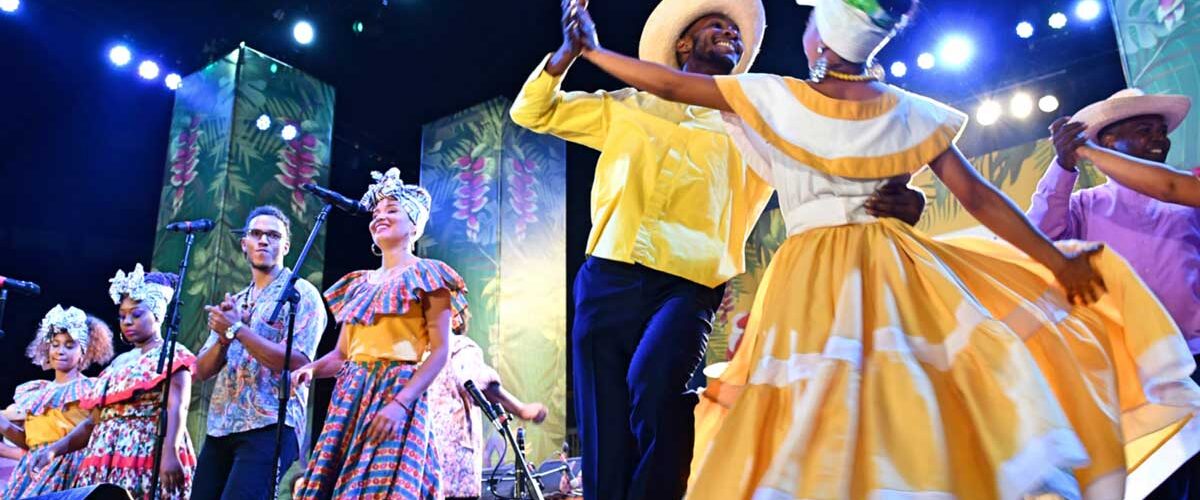
Festival de Música del Pacífico Petronio Álvarez
I wasn’t disappointed, as I ran into the little-known Festival de Música del Pacífico Petronio Álvarez, a free six-day celebration of African musical heritage, food and dance, which takes place every August – widely regarded as Latin America’s most important Afro music festival, though largely a secret outside Colombia.
Each day 100,000 people filled the streets around Cali’s enormous Coliseo del Pueblo. It was an extraordinary almost-biblical spectacle.
In the distance, the West Andes blocked out the sky. Smoke from the hawker’s grills curled up into the air, and a swell of people nudged their way along the narrow streets towards the crowded coliseum.
Most visitors to Cali stay in San Antonio, the oldest part of town, and ostensibly the hippest. Unlike the city’s traffic-choked thoroughfares, the neighbourhood enjoys a village-like calm.
There’s no shortage of rooms to rent in San Antonio (starting from as little as £10 per night) and there are lots of chic little cafes where a good menu del día rarely costs more than £5 and fills you up for the day.
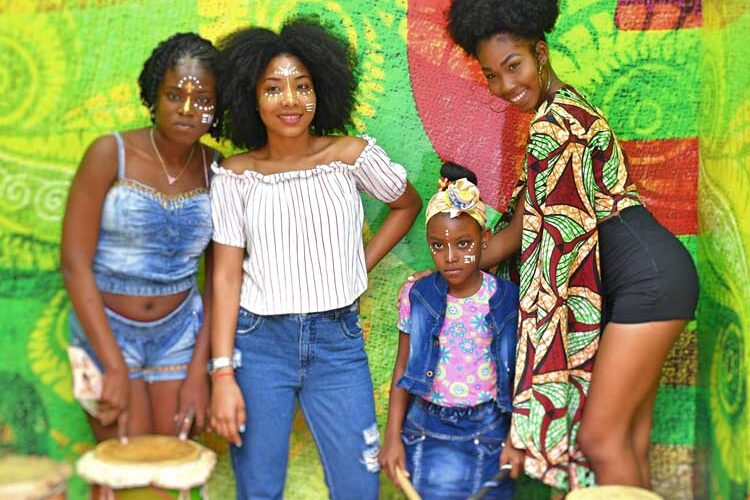
Afro-Latinas make up around 50% of Cali’s population: descendants of African slaves, shipped over by the Spanish hacienda owners to work the land. Colombia’s third-largest city, after Bogotá and Medellín, Cali has a developing economy and growing industrial sector, though widespread poverty remains, with unemployment around 20%.
This year almost a quarter of festival-goers came from abroad; a sign that the secret is finally out, and Petronio’s appeal is reaching a wider audience.
Taking the “Mio” bus to get around Cali is recommended, as it has its own lane, avoiding the traffic. You can buy a travel card, or single journey card, from any of the roadside stations.
Since the Colombian government’s 2016 peace accord with FARC, which ended half a century of violent conflict, the Pacific region has begun to prosper. Tourists are starting to feel comfortable enough to visit. The festival, in a sense, serves as a celebration of peace as well as music.
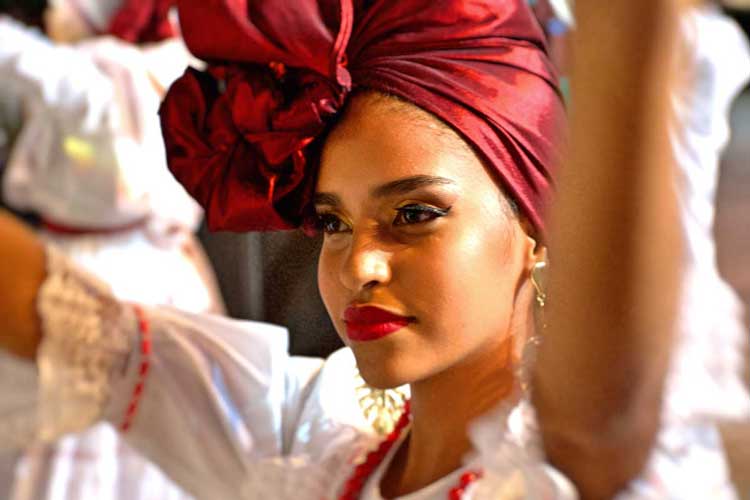
TRADITIONAL HANDCRAFTS
According to the Cali mayor’s office, this year’s festival generated over £1,000,000 for the local economy.
Of the thousands of food, drink and handcraft stalls, the most popular were those selling ladies’ ancestral turbantes: elegant, pastoral-toned headscarves wound tightly around the ladies’ heads, tied off in a neat bun at the side.
One of the headdress designers, Nancy Lozano, told me that the turbans of the enslaved workers served a number of different functions: “To hide seeds for sewing later, to store small pieces of gold for trading, and also to hide the women’s beauty from the jealous wives of the slaveowners.”
The turbans also carry another significance. If the bow is tied to the right it means the woman is spoken for. To the left, she’s single. And if it’s in the middle it’s said to represent a strong powerful woman.
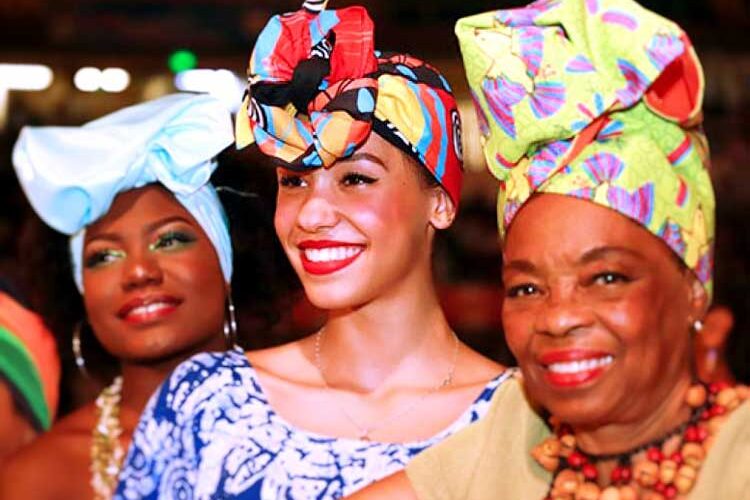
CALI NIGHTLIFE
Beyond a handful of churches and museums, Cali itself is low on sights. But what it lacks in architecture it more than makes up for with the electrifying atmosphere of its nightlife.
Out on the streets, there’s an interminable buzz of conversation. Cold little glasses of Águila beer perspire in the humidity. As the sun goes down, couples lean in closer with every sip, and the hush of their eyes becomes more amorous.
Those surreptitious little love smiles contain something of pure magic – like the thing one feels sometimes in looking at a canvas or dreaming of a place you’d like to see, but never find.
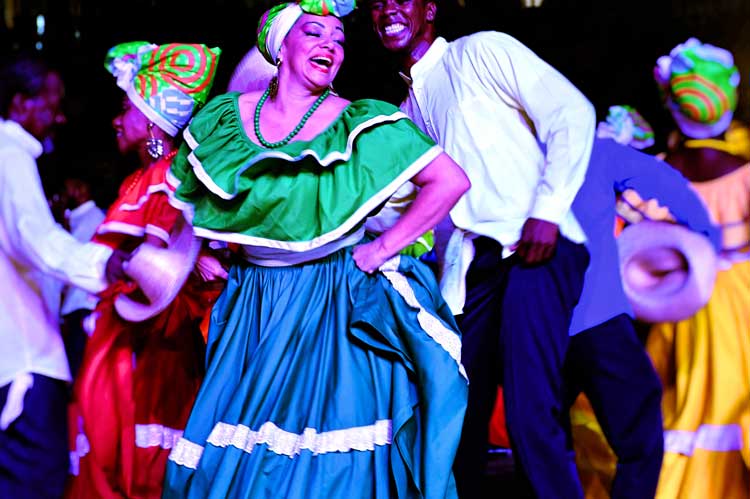
As long queues formed outside the city’s glitzy Salsa clubs, a cool mountain breeze lightens the heat of the day. World-class salsa dancers were filing into the room but, on closer inspection, you could see they were young Caleño couples, wearing old trainers and jeans, chatting with a beer in one hand and their partner in the other, curling effortlessly around each other, gliding across the checkered tiles smiling, barely breaking a sweat.
Music in Cali is more than mere entertainment: it’s a unifying factor that ties the city together. Petronio is perhaps the epitome of this communal spirit of celebration: it’s one huge party that spills out into the streets after the concerts finish each night, and continue at full pace until dawn.
Afro-Latino rhythms, endless bottles of viche, and a manner of dancing that’s so seductive, so frenetic, it would put even the salsa-pros to shame, were they not there joining in too.
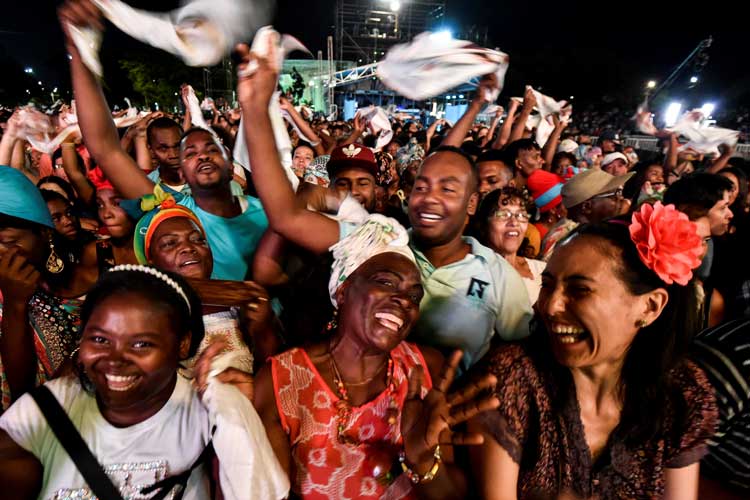
CLOSING NIGHT
Around midnight on the final night, the 100,000-strong crowd swayed as one, twirling 100,000 white handkerchiefs in the air to the melody of the marimba de palma chonta, passing around bottles of arrechón (bitter locally-brewed creamy sugarcane rum).
For almost two hours, headliners Herencia de Timbiquí thrilled the crowd with their unique blend of high-powered choral harmonies.
Flowing beneath the symphonic flourishes of the Cali Philharmonic, the melodies of the chonta-wood marimba fell like warm southern rain. It was all driven along by the pounding of the deer-hide cununus and seed-filled percussion of the guasá.
Add the duelling electric guitars and an incendiary brass section and the result was a high-powered blend of rich Pacific rhythm, and it seemed like the whole city was dancing.
Over the course of the six days, it became obvious to me that Petronio was more than a music festival: it was a celebration of nature, tradition, place and history, and, perhaps above all, those sublimely intangible things that can only come from living in close conviviality with the land; which can be taught in no other way than through the interminable duet of song and silence; where music shows itself to us: the earth singing itself into existence.
This might just be the greatest “unknown” festival in the world, one that sweeps you up in its love-of-life atmosphere; the locals call it gozadera – I’m already booked in for another dose next year.
IF YOU GO
How to Get to Cali
Flights from London Heathrow to Cali (via Bogotá) start at £600 rtn inc. taxes with Avianca
U.K. citizens can visit Colombia on a tourist visa-on-arrival for up to 90 days
Where to Stay in Cali
Hotel Americana
Carrera 4 8-73, Cali, (+57) 28823063 hotelamericana.com.co 3-star downtown hotel with continental breakfast. Doubles begin at £17
Hotel Obelisco
Av. Colombia 49, Cali, (+57) 28933019, hotelobeliscocali.com 4-star downtown hotel with outdoor pool and buffet breakfast. Doubles begin at £35
Four Points by Sheraton
Calle 18 Norte #4N – 08, Cali, (+57) 24866000, marriott.com 4-star downtown hotel with outdoor pool and buffet breakfast. Doubles begin at £65
Where to Eat in Cali:
El Valencia Restaurante Español
Calle 3 10 35, San Antonio, Cali, (+57) 316 6210136,
restelvalenciacali.jimdo.com. Traditional Spanish cuisine (with 5 types of paella). Starters around £2 – £8.
Charrua’s Parrilla fusion
Calle 18 #105-75, Cali, (+57) 2 3087951,
charruasparrillafusion.com. Family style steakhouse with gourmet standards (Uruguayan beef). Starters around £3 – £14.
Waunana Restaurant, Calle 4 # 9-23, San Antonio, Cali, (+57) 2 3450794,
waunana.com. Spectacular pairings of local ingredients and flawless presentation (try the 7-dish tasting menu). Starters around £4 – £15.
Learn More About Cali
Informative Colombian tourist information site: colombia.travel
Travel advisories and information: gov.uk/foreign-travel-advice/colombia
Clubs in Cali
Tin Tin Deo (tintindeocali.com) a Cali institution that’s regularly touted as the best place in town.
Zaperoco (zaperocobar.co) an old school salsa bar, small dance floor but a big reputation.
La Topa Tolondra (facebook.com/latopabar) a swinging venue with live bands, salsa classes and long queues after 11pm.
Events in Cali
Delirio (delirio.com.co) on the last Friday of the month, Cali’s answer to Cirque de Soleil, with hundreds of dancers, acrobats and musicians.
Festival Mundial de Salsa (festivalsalsacali.com) in September, a competition between around 5,000 young dancers from Colombia and worldwide.
Feria de Cal (feriadecali.com) 25-31 Dec, the biggest party of the year with live music and carnival-style parades across the city.
Petronio Alvarez (petronio.cali.gov.co) mid-August
Salsa Classes in Cali
Private classes start at around £10 per hour and are available from a variety of companies including Sondeluz dance academy (sondeluz.com), La Topa Tolondra (facebook.com/latopabar) and Sabor Manicero (salsa-classes-in.cali-colombia.co)
Author Bio: Michael Molyneux is an English teacher from the UK, who lives in Spain and currently works in Qatar. His book Letters From A Young Poet is available from Amazon
- Palawan Perfection: Exploring the Philippines’ Last Ecological Frontier - July 13, 2025
- A Journey to Ashland, Oregon’s Shakespeare Festival - July 13, 2025
- The Ultimate Guide to Cairo’s Top Three Museums: Which Should You Visit? - July 12, 2025
